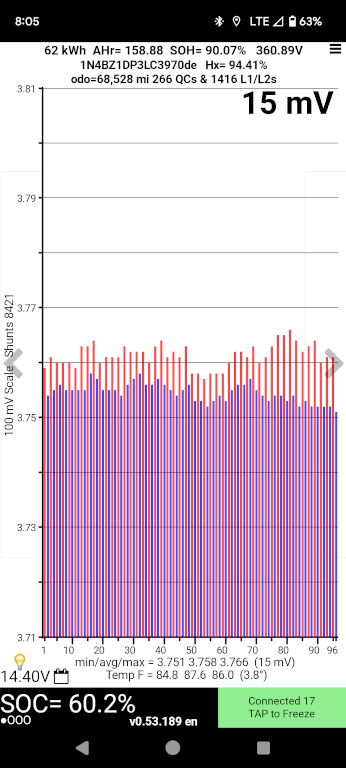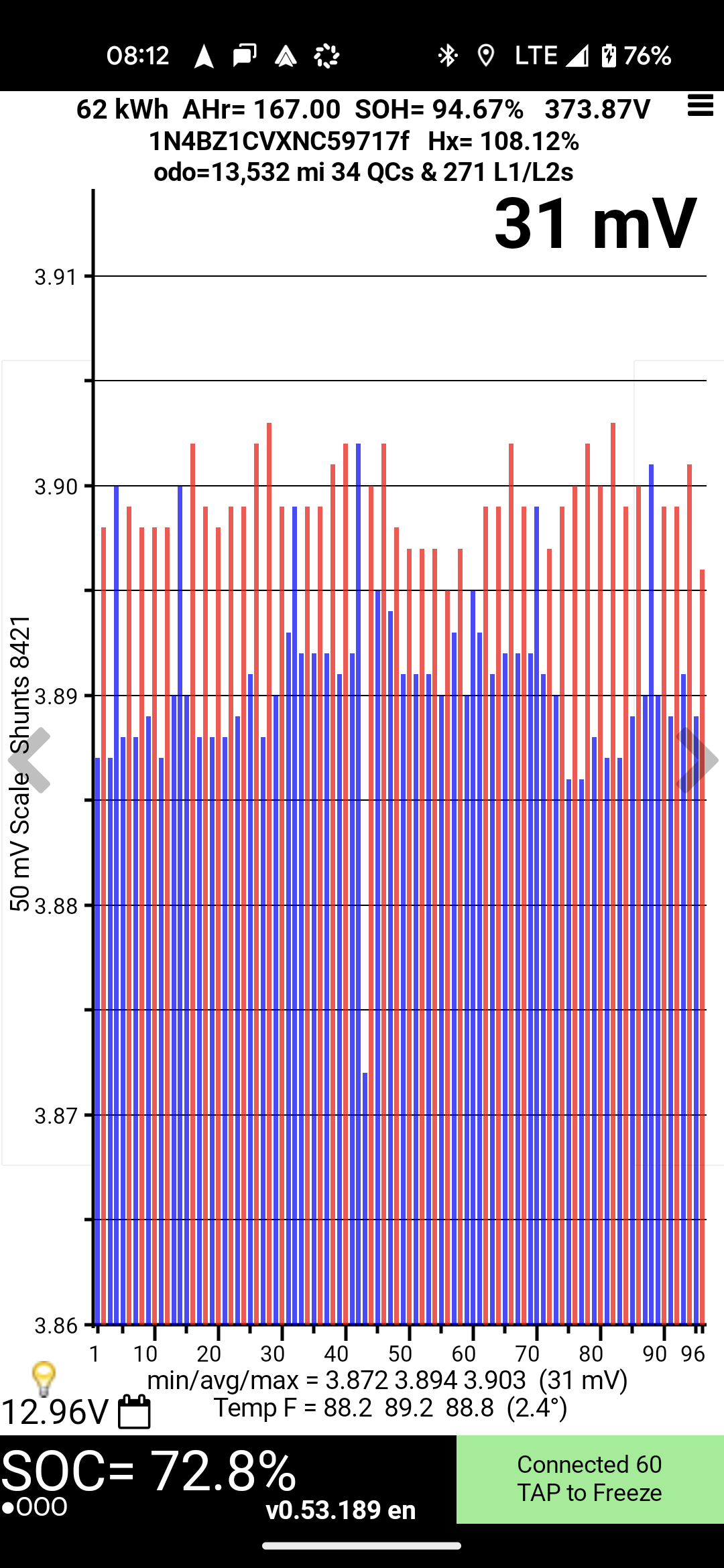DaveinOlyWA
Well-known member
DougWantsALeaf said:So I measured my S+ too soon, it further adjusted up to 93.24% SoH... car was at 93.1% on Dec 26, 2021. I will certainly take flat SoH for 18+ months.
Wish I could apply some of that same magic to my 2019 SV+.
What is the Hx difference between the two? There is some evidence that higher demand seems to bring stats up. With extended modest use, the car determines that part of pack can be hidden w/o creating an inconvenience to the driver.
My guess is a hidden reserve is created that LEAF Spy cannot see. The reserve is designed to increase longevity w/o the risk of overcharging.
Of course EVERYONE overcharges and we DO need to know that there is no time frame where high SOC is beneficial to the pack. It is all about acceptable risk so yeah, even ONE SECOND is not good. The reserve simply prevents that from happening. The risk is also relative so 90% is better than 95% but worse than 80% and so on. The magnitude of the risk is a question and not easily determined because the risk remains very small.
So want higher numbers? Try driving it more and see what happens.
AGAIN; evidence is random and weak and ALL my statements are simply personal comments.
FYI; most of the weakness is due to lack of data, poor responses to direct questions about charging/driving habits and too many generalities injected that aren't even part of the conversation.
TBH: if I hear one more "Nissan made sure we can't screw it up because of..." statement I will EXPLODE!



